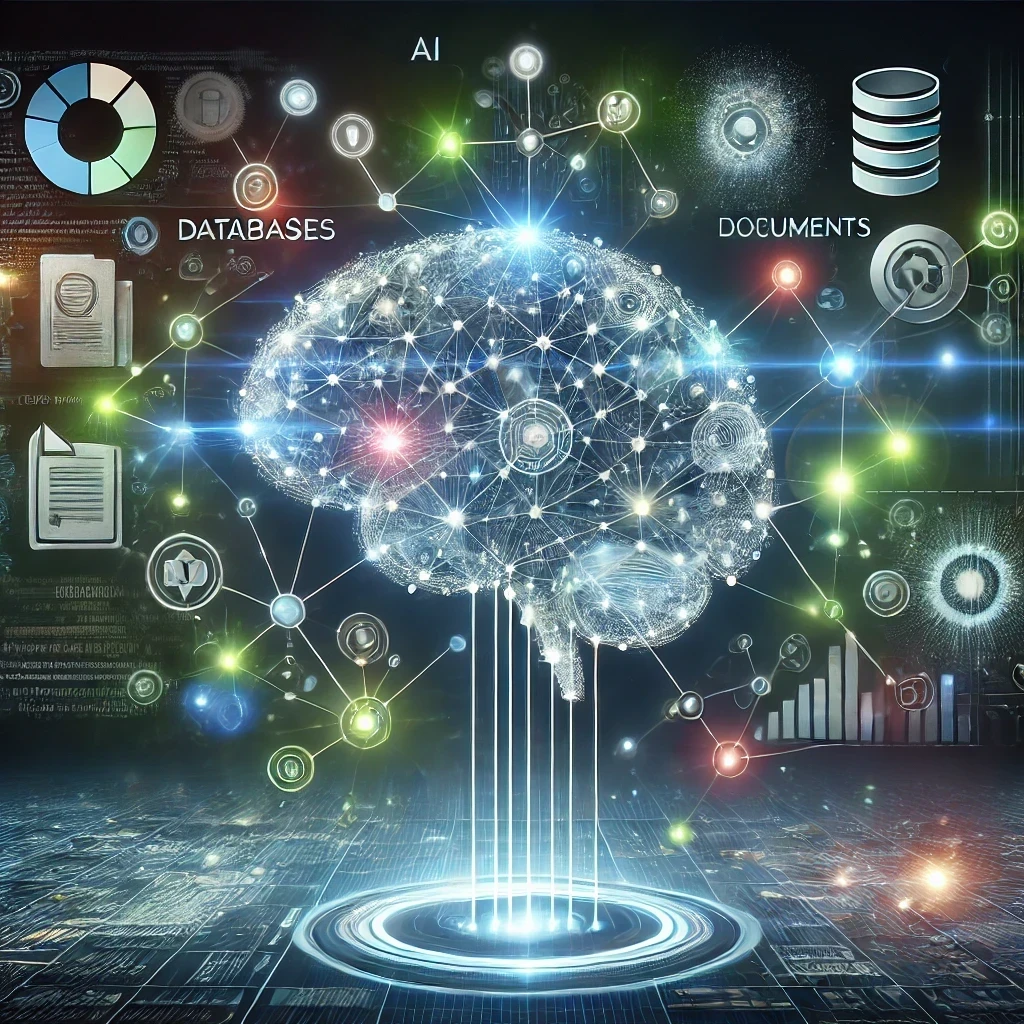Introduction
The landscape of AI-driven customer support and information retrieval is rapidly evolving. One of the latest advancements in this domain is Retrieval Augmented Generation. This innovative approach combines the strengths of retrieval-based systems and generative models, enabling AI to provide more accurate and contextually relevant responses. In this article, we explore what RAG is, its applications, and the technical details behind its functionality.
What is Retrieval Augmented Generation (RAG)?
Retrieval Augmented Generation is a technique that enhances the capabilities of large language models (LLMs) by incorporating external knowledge into the generative process. Unlike traditional generative models that rely only on pre-trained knowledge, RAG retrieves relevant information from external databases. This approach allows it to produce more accurate and contextually enriched responses. This makes RAG particularly useful in scenarios where up-to-date or specific information is required, such as customer support and knowledge management.
Key Applications of RAG
RAG Chatbots for Customer Support
RAG chatbots are increasingly being used in customer support to provide more accurate and context-specific answers. By retrieving relevant information from a company’s knowledge base or other resources, RAG chatbots can address customer queries more effectively than traditional chatbots that rely solely on pre-trained models. This leads to improved customer satisfaction and reduced resolution times.
LLM RAG for Knowledge Management
Incorporating it into large language models (LLMs) allows organizations to leverage both their internal knowledge bases and the generative capabilities of AI. This hybrid approach is particularly valuable for knowledge management systems, where the ability to access and generate information dynamically is crucial. LLM RAG systems can quickly retrieve and synthesize information from vast datasets, making them ideal for research, decision-making, and complex query resolution.
RAG for Dynamic Content Generation
RAG can be used to generate dynamic content, such as personalized recommendations, reports, or summaries. By retrieving relevant data and combining it with generative AI, RAG can create content that is not only contextually accurate but also tailored to the specific needs of the user.
Technical Details of RAG
Retrieval Mechanism
The retrieval component of RAG involves searching for relevant documents or information from an external database or knowledge base. This is typically done using vector-based search algorithms, which convert both the query and documents into high-dimensional vectors. These vectors are then compared to find the most relevant matches.
- Vector Embeddings: Vector embeddings are representations of text in a high-dimensional space. They allow for the comparison of the semantic meaning of different pieces of text.
- Similarity Search: Once vector embeddings are created, a similarity search is performed to identify documents or data points that are closest in meaning to the query.
Integration with Generative Models
After retrieving relevant information, RAG integrates this data into the generative process of the language model. The retrieved documents or data points are used to augment the model’s responses, providing additional context and improving the accuracy of the generated content.
- Contextual Augmentation: The retrieved information is fed into the generative model as additional context, enhancing the model’s ability to generate relevant and accurate responses.
- Combining Outputs: The model combines the retrieved information with its generative capabilities to produce a final output that is both informed by external data and linguistically coherent.
Training and Fine-Tuning
RAG models require fine-tuning to effectively integrate retrieval and generation. This involves training the model on datasets that contain both relevant documents and the corresponding responses. Fine-tuning helps the model learn how to effectively use retrieved information to improve its generative outputs.
- Supervised Learning: The model is trained on labeled data where the desired output is known, helping it learn to combine retrieval and generation effectively.
- Reinforcement Learning: In some cases, reinforcement learning techniques are used to refine the model’s ability to generate responses that satisfy specific criteria, such as relevance or accuracy.
Benefits of RAG in AI Applications
Improved Accuracy and Relevance
By incorporating external knowledge, models can provide more accurate and contextually relevant responses than traditional generative models. This is particularly important in domains where precision is crucial, such as customer support and technical documentation.
Enhanced Scalability
RAG models can scale more effectively because they leverage external databases, which can be updated independently of the model. This allows the system to remain up-to-date with the latest information without requiring frequent retraining of the generative model.
Versatility Across Domains
RAG’s ability to retrieve and generate information makes it versatile across various domains. It can be tailored to meet specific requirements in areas like customer support, knowledge management, or content generation. This makes it a flexible solution for diverse applications.
Challenges and Considerations
While it offers significant advantages, it also comes with challenges:
- Data Quality: The effectiveness of RAG depends heavily on the quality of the retrieval corpus. Poorly curated or outdated data can lead to inaccurate or misleading responses.
- Computational Resources: Implementing such systems can be resource-intensive, requiring significant computational power, especially when scaling to large datasets.
- Ethical Concerns: As with any AI system, there are ethical considerations, particularly concerning the source and use of retrieved data. Ensuring transparency and fairness in how information is retrieved and presented is crucial.
Future Trends in RAG Technology
Integration with Real-Time Data Sources
As this technology evolves, we can expect greater integration with real-time data sources. This will allow RAG models to provide even more timely and relevant responses, particularly in dynamic environments like financial markets or breaking news.
Enhanced Personalization
Future developments could also focus on enhancing personalization. RAG models retrieve user-specific data and combine it with generative AI. This enables them to deliver highly personalized interactions tailored to individual needs and preferences.
Broader Adoption in Enterprise Solutions
As businesses recognize the value of RAG in improving customer interactions and knowledge management, we are likely to see broader adoption of this technology in enterprise solutions. Companies will increasingly integrate it into their customer support systems, content management platforms, and decision-making tools.
Conclusion
Retrieval Augmented Generation represents a significant advancement in AI technology, offering a powerful combination of retrieval and generation to enhance the accuracy and relevance of AI-driven interactions. Whether through RAG chatbots for customer support or LLM RAG for knowledge management, this technology is poised to play a critical role in the future of AI applications. As RAG continues to evolve, it will unlock new possibilities for dynamic content generation, personalized interactions, and real-time decision-making.





